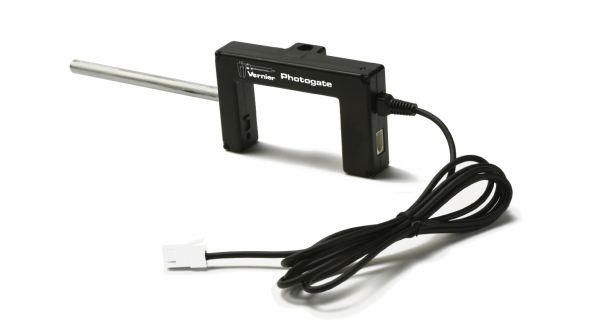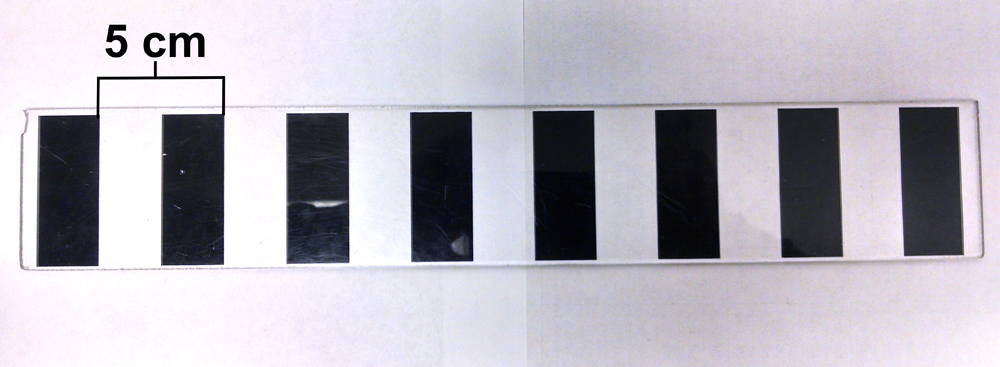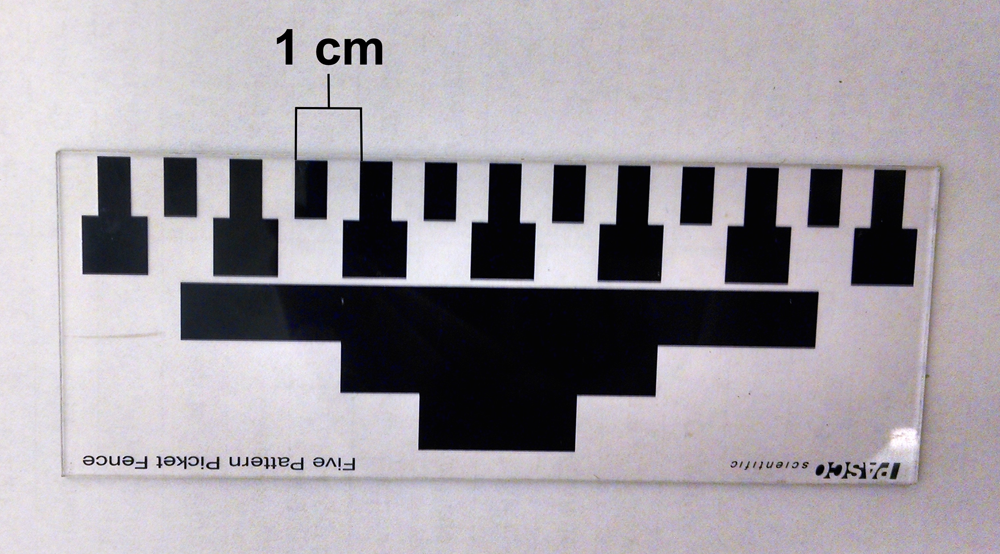Appendix B: Photogate and Picket Fence
Back to TopHow does the photogate measure velocity?
Given that the picket fence, and whatever it's attached to, are both moving at constant velocity, the methods by which the photogates measure velocity are fairly simple. The photogate, while turned on, has a laser beam spanning from one end to the other. When the first black band "breaks" the beam, meaning that the laser is no longer reaching the sensor on the other end of the photogate, it starts a timer. The timer stops once the black band has passed and the laser reaches the other side.
Figure 1
Picket Fences
5-cm bands

Figure 2
1-cm bands
When it is stated that the "1-cm bands" are the ones passing through the photogate, it is talking about the row with the smallest bands. By referring to Fig. 3, you can see that for the most bottom row of bands, it is 1 cm from the leading edge of one band to the next.
Figure 3
